Historic Deerfield, Massachusetts | Historic Homes and the Deerfield Inn
I left my umbrella at home on purpose. It was a cold, dreary, late autumn afternoon and I thought that act of omission might clear the skies for my stay at the Deerfield Inn and my tour of Historic Deerfield’s antique homes in Deerfield, Massachusetts. My ploy did not work. Upon arrival, Deerfield was drizzly […]
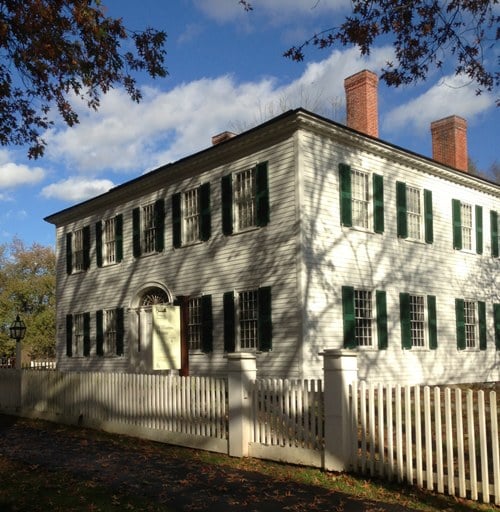
The Williams House is a Federal-style house. Built in 1730 and remodeled in 1817, it is now renovated to its present appearance in 1816.
Photo Credit : Heather AtwellI left my umbrella at home on purpose. It was a cold, dreary, late autumn afternoon and I thought that act of omission might clear the skies for my stay at the Deerfield Inn and my tour of Historic Deerfield’s antique homes in Deerfield, Massachusetts. My ploy did not work. Upon arrival, Deerfield was drizzly and wet. Grey skies loomed above while dampness soaked my feet.
Fortunately, this small town—which was placed on the National Register of Historic Landmarks in 1962—exudes a simple beauty even on rainy days. Great hardwoods frame the mile-long street of this quaint, peaceful and preserved village. And what’s a little bit of rain compared to the hardships endured by the town’s earliest settlers. Though Native Americans lived in this area for at least 8,000 years, in the late 17th century, English colonists settled and established it as town. Early Colonial life in this fertile area of the Connecticut Valley of Massachusetts offered good harvests, but after one too many bloody attacks it was left abandoned in 1675 until it was resettled in 1682. In February of 1704, Native Americans and French soldiers attacked the town of 291, killing 48 and taking 111 prisoners. As time passed, peace was established between the town’s inhabitants and the Native Americans; then it became divided once again between those who supported the Tories and those who supported the Whigs. Finally after the Revolution life became more civilized (no more unexpected bloody attacks) and education became a priority. The town established Deerfield Academy in 1797 which today operates as a coed boarding school. (Yes, that was the very abridged version.) Through the foresight and interest of Henry Flynt and his wife, whose son entered Deerfield Academy in 1936, the Heritage Foundation was established in 1952, known today as Historic Deerfield. According to www.historic-deerfield.org, “it has a dual mission of educating the public about the lifestyles of the diverse people who lived here long ago and of preserving antique buildings and collections of regional furniture, silver, textiles, and other decorative arts.” Deerfield is not like Plimouth Plantation or Old Sturbridge Village, with historical re-enactors playing the parts of the community folk churning butter. However, the authentically preserved buildings show what life was like for the inhabitants in Colonial America. Between the hours of 9:30 to 4:30, for the modest admission fee of $14 for adults; $5 for ages 6 to 17; and free for those under 6; visitors can tour 12 of the antique homes in Deerfield’s historic village center. (Even better deal: A stay at the Inn includes a free 3-month membership to the museum houses of Historic Deerfield.) Stop at the Visitor Center across the street from the Deerfield Inn to purchase a ticket and to get the lowdown on the day’s activities. An introductory tour begins at 10:30, and a “Tour du Jour” starts at 2 pm. There’s also a 12-minute on-demand video that will give you a brief overview of the history of the region. There are guided and self-guided tours of the Historic Deerfield homes. The knowledgeable attendants at each house give a quick overview and can answer questions at homes designated as self-guided tours. Other homes offer official tours that last about 35 minutes. I arrived at 4, so I had just enough time to visit Sheldon House. Built in 1755, the attendant gave me a quick overview and explained that the rooms were set up to reflect the life of a farming family. At 4:30, I relaxed in the parlor of the Deerfield Inn, where I’d be staying for the night, and enjoyed some tea and cookies. What better place to spend a cold a rainy evening than in a comfy and cozy historic inn? The fireplace warmed the lovely sitting room where guests gathered sipping hot tea and munching on cookies. After a cup of English Breakfast, I headed next door to the Museum Gift Shop and Bookstore where I perused rooms filled with American crafts, jewelry, toys, and an expansive collection of books. Afterwards, I gathered my luggage and made my way to the carriage house and my room, named after Jennie Maria Arms, whose father built the Deerfield Inn. She had a successful career as a science teacher and writer and later married the town’s well-known historian George Sheldon. After quickly unpacking and changing into a dry pair of pants, it was time for dinner at Champney’s Restaurant & Tavern, located inside the main inn. The ambiance, food, and service were delightful. After finishing the mussels as an appetizer, I considered eating the broth from it as a soup, but I restrained myself. (Okay, I did sop some up with a hunk of bread.) And after each plate, I kept realizing that I forgot to take a before picture. Oops. When there is delicious food in front of me, I eat. Champney’s is a field to fork restaurant and I am a fork to mouth gal. And don’t think for moment that this before and after dessert shot meant that I restrained myself when it came time to partake this chocolatey masterpiece. In fact, we asked the waitress—after finishing our dessert—for a “model” shot. Halfway through my meal, I had the pleasure of meeting Jane Howard, who along with her husband Karl Sabo, has been the innkeeper for the past 26 years. As she shared stories about the Inn and the community, her fresh and genuine exuberance radiated and I had to ask if I understood her correctly when she told me how long she’s been at Deerfield Inn. It almost seemed impossible to maintain such excitement and passion after all that time, but she explained that what keeps everything new is meeting the guests, hearing about their lives, and finding something interesting about them. I think that, combined with her passion to create an incredible experience for her guests, filters through everything at the Inn. The staff was so welcoming but unobtrusive. It felt so homey. And the Inn’s 70% return guest rate means that the feeling is shared by many. After a good sleep, food was on the menu once again. Morning started with a delicious breakfast, included with the stay. The Inn makes their own granola and yogurt, does their own baking, and uses only local hormone-free dairy, and eggs from happy, cage free, vegetarian-diet chickens. My Eggs Benedict were divine.Fully nourished, I headed outside for the main attraction, the homes of Historic Deerfield.
Lucky for me, the magician had not only a bunny in his hat, he also had some magic up his sleeve: A day of sunshine! This tour starts on the North end of the street, near North Meadows, follows to South Meadows, then heads back up the other side to North Meadows. There are more houses than what I show here, and so much more to see and learn. (Pictures are not allowed to be taken inside any of the homes.)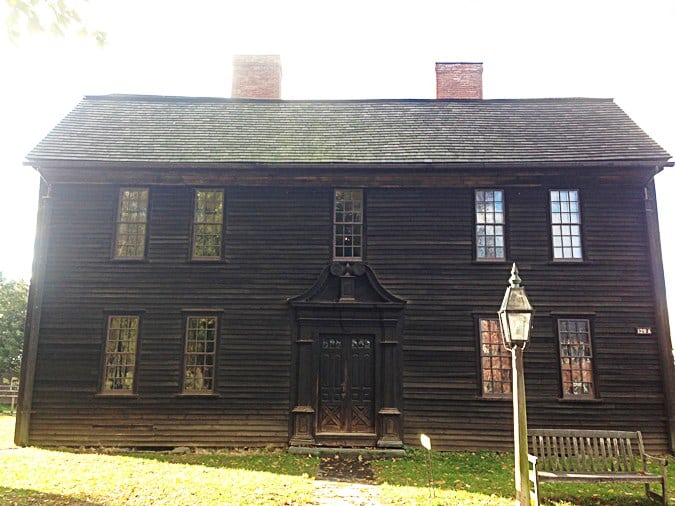
Photo Credit : Heather Atwell
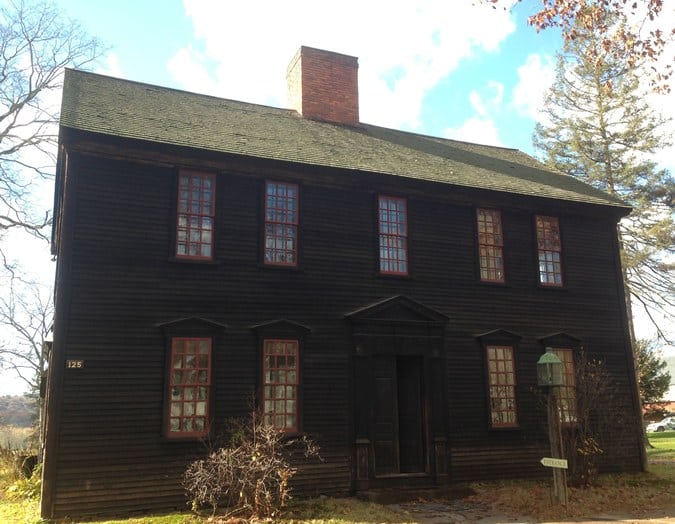
Photo Credit : Heather Atwell
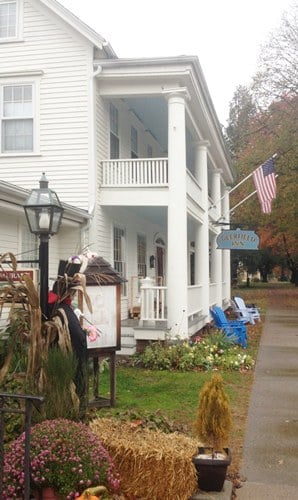
Photo Credit : Heather Atwell

Photo Credit : Heather Atwell

Photo Credit : Heather Atwell

Photo Credit : Heather Atwell

Photo Credit : Heather Atwell
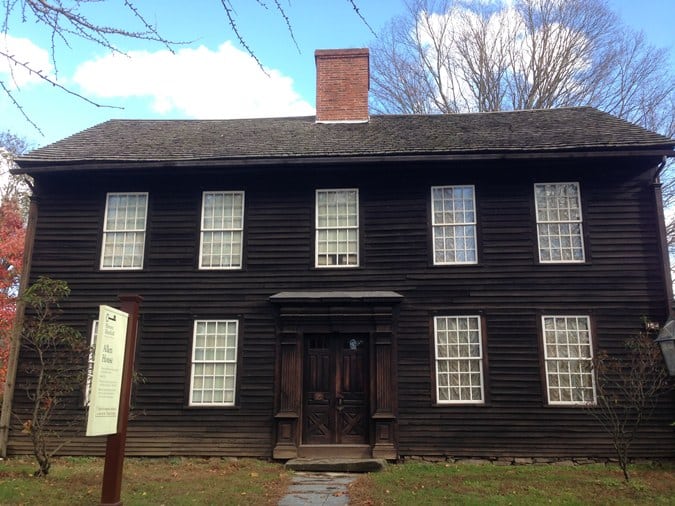
Photo Credit : Heather Atwell

Photo Credit : Heather Atwell


